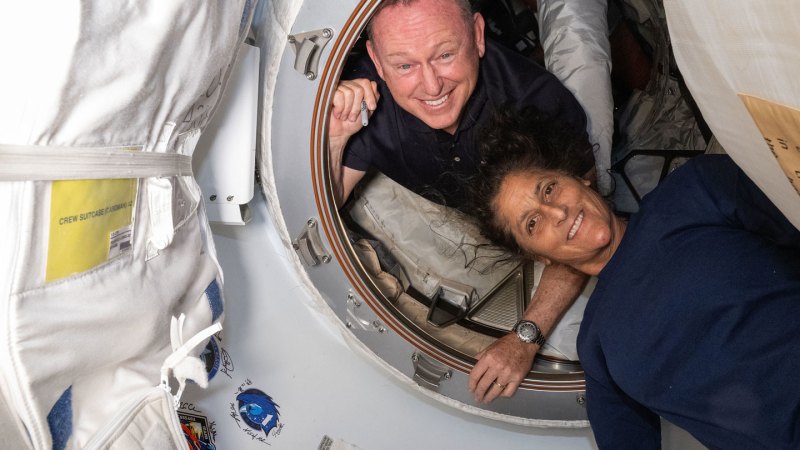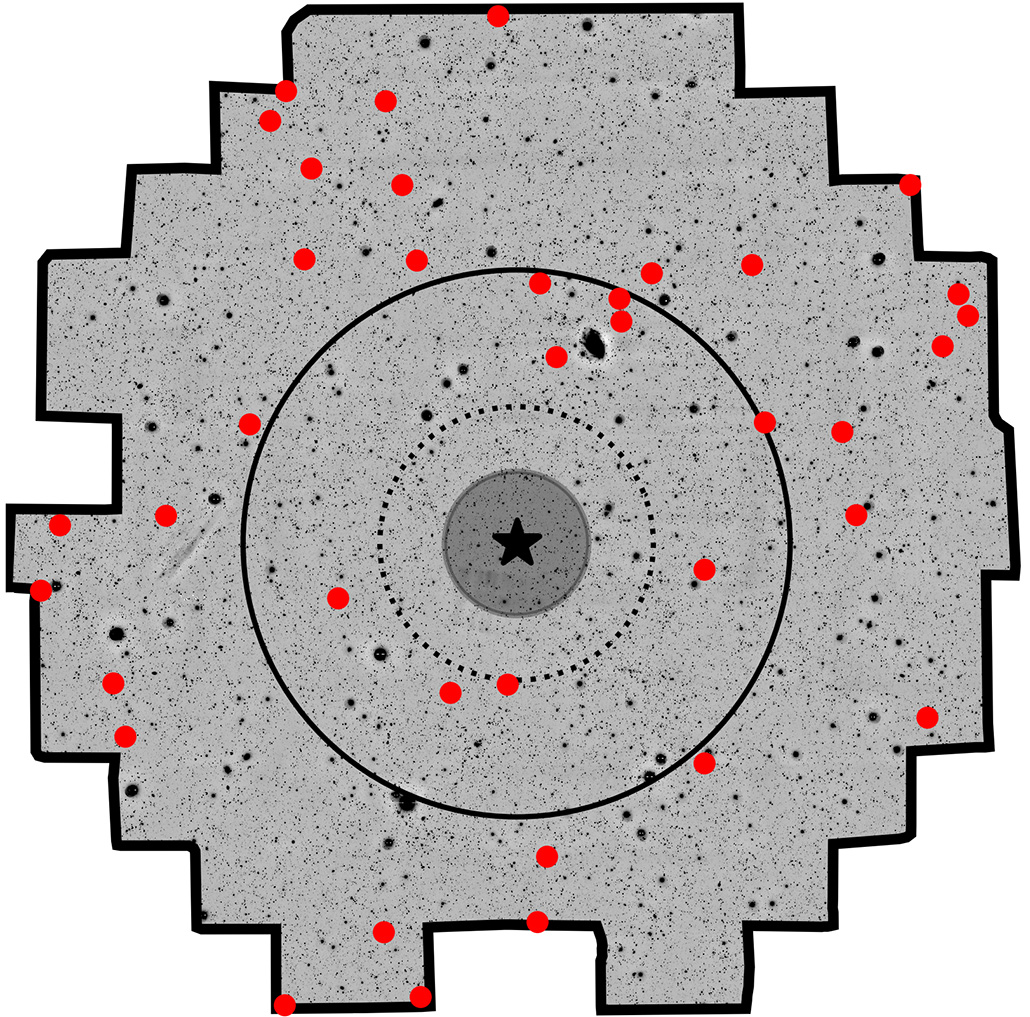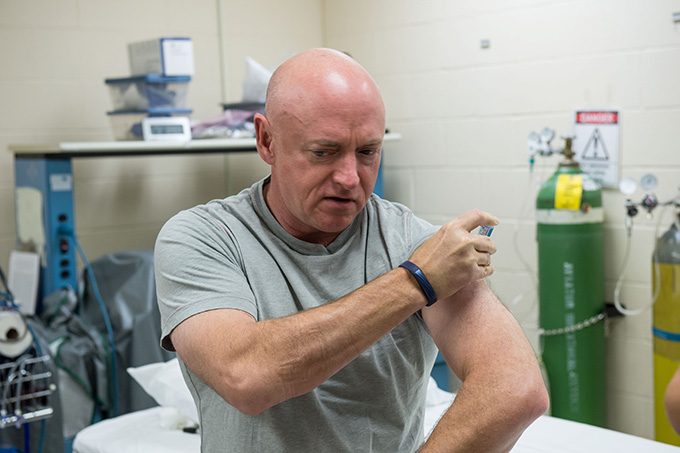
Imagine going on a weeklong business trip and not coming home until the following year. That may be the situation for U.S. astronauts Sunita Williams and Butch Wilmore, whose eight-day mission to the International Space Station has already stretched to more than two months and is likely to go even longer.
The pair launched to the space station on a test flight of Boeing’s Starliner spacecraft on June 5. The plan was for them to come back on the same ship eight days later. But helium leaks and issues with the spacecraft’s thrusters made NASA and Boeing decide to delay the astronauts’ return.
If the pair don’t return on Starliner, they may fly back with another crew of astronauts launching on a SpaceX Dragon vehicle in September. Those astronauts are assigned to a mission lasting through February 2025. Williams and Wilmore would join that mission and stay on the space station until February, too — taking their extended stay in space up to eight months.
The situation has prompted headlines and hand-wringing about how the pair are stranded in space. But although nothing in spaceflight is routine, this isn’t the first time people have been stuck in space for longer than expected.
“This isn’t unprecedented, to have astronauts on a space station who have a vehicle that they may not be able to return with,” says Emily A. Margolis, a curator of contemporary spaceflight at the National Air and Space Museum in Washington, D.C.
Given the space ambitions of companies and governments the world over, it probably won’t be the last (SN: 6/11/24). Every time a delay happens, though, a different issue or event has been to blame.
“The fundamental problem is the same,” Margolis says. “If you have a permanent human presence in space, how do you keep people safe and have a lifeline and a lifeboat, even when there are so many different things that can go wrong?”
An uncrewed mission brought new supplies to the space station on August 4, so the astronauts won’t run out of food or clothes, Margolis says — although the lack of laundry on the space station means they might get stinky.
Like other space stragglers before them, Williams and Wilmore are taking their extra space time in stride. “Honestly, the team wanted more time” than the original eight days, said NASA chief flight director Emily Nelson in a news conference August 14. “They’re highly integrated members of this crew and are always asking for more work to do, frankly.”
“We are having a great time here on ISS,” Williams said in a July 10 news conference. “It feels good to float around, it feels good to be in space and work up here…. I’m not complaining.”
Meet some other astronauts whose return flights were delayed (see slideshow). Then read on to discover the reasons why — and how the astronauts affected felt about the experience.
Engine failure
Mechanical issues have stranded astronauts in space before.
In 1971, the USSR launched the world’s first space station, called Salyut (SN: 7/17/76). The ninth mission to Salyut launched on a Soyuz spacecraft in April 1979, but never made it to the station.
The mission was supposed to bring a fresh crew to the space station, and then bring the cosmonauts aboard Salyut home. But the spacecraft’s engine failed shortly after launch.
Fortunately, the cosmonauts on the Soyuz made it back to Earth safely. But the cosmonauts still in orbit, Vladimir Lyakhov and Valery Ryumin, were left without a safe vehicle to return in. The Soyuz spacecraft they had arrived in was docked to Salyut, but mission control worried that it would have the same engine problem. That spacecraft was sent down empty.
By the time a new, uncrewed Soyuz vehicle arrived to bring them home, the two cosmonauts had spent a total of 175 days in space — a record at the time. Ryumin went on to fly two more missions, one on Soyuz in 1980 and one on a NASA space shuttle in 1998, 18 years after he was supposed to have retired.
Geopolitical chaos
When the Soviet Union collapsed in December 1991, cosmonaut Sergei Krikalev was about four months into a five-month stay aboard the Mir space station. His fate was uncertain. The country that sent him to space no longer existed. The formerly Soviet Cosmodrome, located in Baikonur, Kazakhstan, was suddenly under control of a newly independent nation. With the chaos on Earth, it wasn’t clear when or how the cosmonaut could return home.
It’s not that there was no way for Krikalev to come back to Earth — there was a return capsule in case of emergency. But because Krikalev was the only flight engineer qualified to keep the space station running, his departure would have meant the end of Mir.
He ended up staying in space for 311 consecutive days, twice the duration of his original mission. He returned to Russia on March 25, 1992.
The ordeal didn’t dampen Krikalev’s enthusiasm for space. He flew again two years later, in February 1994, as one of the first Russian cosmonauts to fly on a NASA space shuttle. He later became one of the first people to live and work on the International Space Station, marking a new era of Russian and American cooperation in space (SN: 6/18/04).
Spaceflight disaster
On February 1, 2003, NASA’s space shuttle Columbia disintegrated in Earth’s atmosphere minutes before it was scheduled to land (SN: 2/5/03). All seven astronauts aboard died. NASA grounded the entire shuttle fleet for 2 ½ years.
The tragedy meant the astronauts on the International Space Station at the time didn’t have a ride home. Three of them — Don Pettit, Ken Bowersox and Nikolai Budarin — waited on the space station for about two extra months before returning on a Soyuz spacecraft in May 2003.
The three astronauts “were grieved by the reason for the extension,” Pettit later told space historian Frank White, author of the book The Overview Effect. “But the fact that our expedition was extended was very much welcome. None of us were ready to come home after a short two and a half months.” Pettit is currently NASA’s oldest active astronaut at age 69, and is scheduled to fly to the space station again on a Soyuz spacecraft this September.
Micrometeorite impact
A Soyuz spacecraft that was docked to the International Space Station sprung a coolant leak after it was hit by a tiny space rock in December 2022. NASA astronaut Frank Rubio and Russian cosmonauts Sergey Prokopyev and Dmitri Petelin were stuck on the space station for six months longer than expected and spent more than a year total in space.
In an echo of the engine failure in 1979, the damaged Soyuz craft returned to Earth with no one on board in March 2023. A replacement Soyuz arrived at the space station in February 2023. But because of the detailed choreography required to keep budgets and schedules for space station visits on track, the astronauts kept working on the station until September.
Rubio spent 370 consecutive days in space, a record for a NASA astronaut, and is still hungry for more. “I absolutely do want to go back,” Rubio told TIME after he returned to Earth last year.
As thousands of new satellites crowd low-Earth orbit, micrometeorite impacts might become more of a problem. Increased space traffic could also complicate launch and reentry schedules, Margolis says. “Everything has to line up,” she says. “You have to have clear space to get home.”
Weather on Earth
The third all-commercial space mission, Axiom Mission 3, launched four European astronauts to the International Space Station on a SpaceX Dragon spacecraft on January 18, 2024. The mission was supposed to return to Earth on February 3, but was delayed several days because of storms near its expected landing site off the Florida coast. The crew spent 18 days on the space station and landed on February 9.
That crew wasn’t disappointed by the extension, either. “More time on the @Space_Station = More photos!” mission commander Michael Lόpez-Alegría posted on X (formerly Twitter) on February 6.
Despite the inherent dangers, many earthbound astronauts are eager to return to space, even when they’ve lived through the ultimate flight delays.
“Given the choice of a six-month mission or a one-year mission, I would prefer a one-year mission,” Pettit said in his interview with White. “People think I’m joking, but I am serious when I say that if we had the technology, I would load my family and myself on the next rocket and we would immigrate into space and never come back to planet Earth.”
#Astronauts #stuck #space #time
Image Source : www.sciencenews.org



